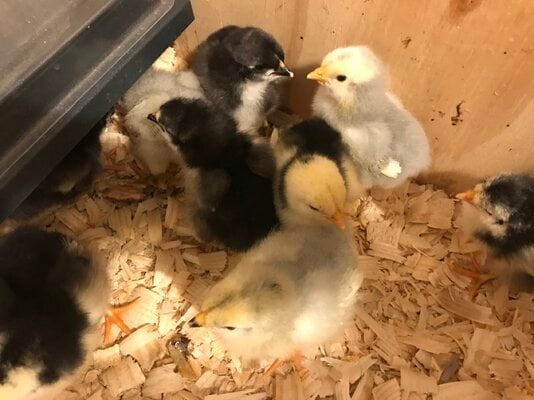Hey everyone! I have a Black Australorp rooster, Black Australorp hens, and Partridge Rock hens. I let a couple hens hatch some eggs, and to my utter surprise, three grey and yellow chicks hatched! They’re absolutely lovely, and I’m in LOVE with them.
Does anyone know if they’ll keep the gray as they grow?
Does anyone know if they’ll keep the gray as they grow?


 ?
? .
.
